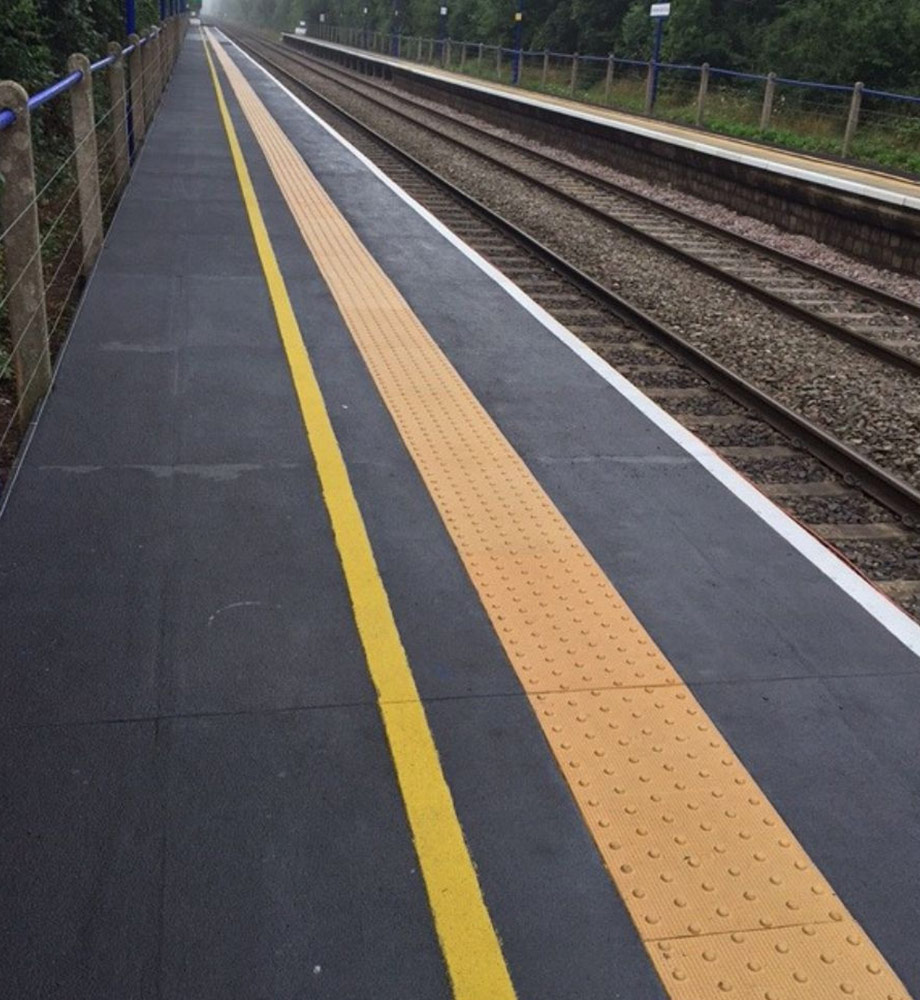Key Features
- Non-Slip Surface: Textured or grooved top surface for traction; often with high-visibility color.
- Lightweight Construction: Less than 20% weight of concrete panels, so minimal additional load on structure.
- High Durability: Will not spall, crack or rust under heavy foot traffic or freeze–thaw cycles.
- Customizable Profiles: Can include built-in warning tiles, ADA detectable-warning studs, or drainage channels.
- Chemical Resistant: Impervious to salt and de-icing agents (withstands repeated chemical exposure for 75+ years).
Benefits
- Enhanced Safety: Visible edge marking and anti-skid texture reduce slip/trip accidents.
- Low Maintenance: No need for surface sealing or repainting; won’t corrode or discolor easily.
- Rapid Installation: Prefabricated panels bolt to framing; panels can be cut on-site if needed.
- Long Service Life: Far outlasts traditional materials in outdoor stations, resisting wear from weather and cleaning.
Applications
- Commuter rail and metro station platform edges
- Transit-oriented development boarding areas
- Bus depots and light-rail platforms needing durable edging
Technical Specifications
- Material: Glass-fiber-reinforced polyester or vinylester panels
- Size: Typical thickness 10–25 mm, width as required to cover the overhang gap
- Load Capacity: Can support uniform live loads up to ~150 psf (comparable to fiberglass deck panels)
- Standards: ADA-compliant tread surfaces; UV-stabilized pigments for color durability
Unique Selling Points (USPs)
- Modular Design: Panels can incorporate curbs, drainage, and tactile features during manufacture
- Thermally Insulating: Composite material remains stable in extreme hot or cold without warping
- Impact Resistant: Withstands dropped tools or equipment better than brittle concrete or metal edges

